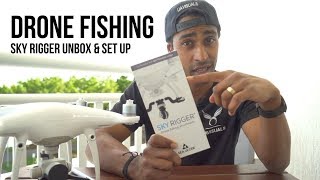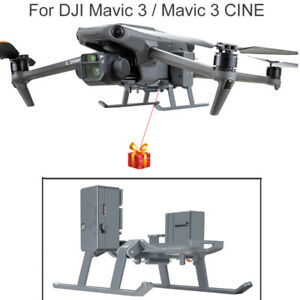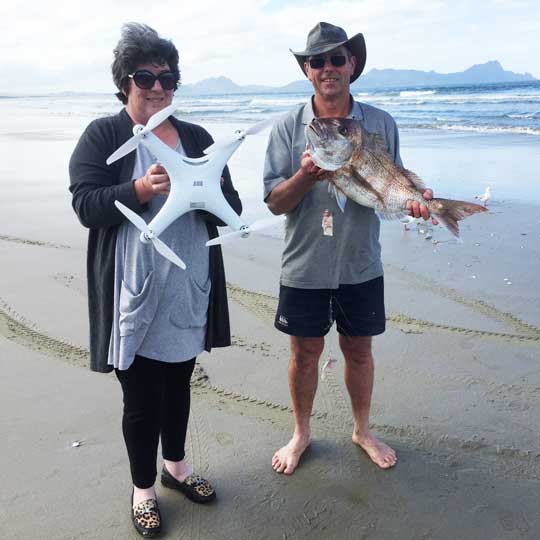
New Zealand has an exciting new method of fishing, drone fishing. This new method uses the most recent drone technology, opening up new possibilities for fishing. If you are interested in purchasing a fishing drone, you can buy a DJI or Splash drone from leading retailers like Drone Fishing NZ. Splash drones can be purchased, as well custom-built fishing equipment.
Aerokontiki Drones
Sharkan makes the Fishhawk fishing drone, which captures a clearer picture of what you're doing. The stabilized camera takes 12-megapixel photos and 4k UHD movies at 30 frames per minute. You can even view the videos on your smartphone. The drone is capable of flying for up to 23 mins, has a spare lithium battery, and has a long transmission range.
Mobula
Mobula drones are specifically designed to fly in the water. It is buoyant and IP56-rated. This means that it can withstand wind speeds up to 20 knots. It also has built-in safety features, including automatic return to home, automatic payload release, and 3 different release mechanisms. A water-returning feature means that your drone will always return to the surface if its battery dies.
Banks'
The popularity of fishing drones has increased, drawing the attention of anglers as much as those who are interested in it. However, the use of a drone has come with its own set of problems. First, drones are not safe for fishing in too deep water. Another problem occurs when a drone crashes at the same place twice. If this happens, the video information is not always reliable.

SplashDrone 4
Swellpro has designed the SplashDrone 4 with a brand new float platform for water sports and recreational purposes. It can be used to fish and other water activities. The drone is made of corrosion-resistant materials as well industrial-grade ABS to withstand harsh conditions. Smooth+ is the SplashDrone 4’s exclusive flight control system. This gives the user full control over the drone and keeps it stable in any environment. Its advanced technology enables it to capture every angle of the sky.
Fisherman Drone
You're in for a treat if you're a New Zealand Fisherman drone fisherman. Snapper are a prized species for drone fishing enthusiasts. Snapper are also beautiful and delicious to catch. These fish are often found near the North and South island coasts. They often congregate during the springtime when they spawn. These fish are available in summer as well as fall, so you can catch them all year.
Flying a drone
You should be aware of the following guidelines if you are planning to fly a drone in New Zealand for drone fishing. The law is the first thing you need to know. It is against the law to fly your drone over marine life, or within 500 metres of any marine mammal. It is important to pay attention to your surroundings while flying your drone. This will prevent your expensive drone from being confiscated.
Payload for a drone
You can get a drone for fishing, but what you must be aware of is the payload. It is important to choose a drone that has the payload capacity to transport heavy fish, and can fly for long periods of time. If you're only going to use your drone for a few minutes, you'll probably catch too few fish to make the experience worthwhile. Luckily, the technology behind drone fishing in New Zealand is getting better.

FAQ
Is it possible to fly a drone at high altitudes without a license?
The FAA has no limit on how high you can fly a drone. The FAA does require you to register unmanned aircraft systems (UAS), which include the registration number of your model, weight and size, serial numbers, manufacturer's names, date manufactured and other information.
Can I fly my drone indoors
Yes, it is possible to fly your drone indoors. It is important to make sure there are no hazards or obstacles in your home. You should not fly near windows, doors or heating vents.
Are drones allowed on public events?
You can fly your drone anywhere you like, provided you adhere to the rules. If you want to fly your drone in public events like parades, festivals, concerts, etc., you must get permission from the event organizers.
Can someone spy on you with a drone?
Yes, anyone can use drones to spy on them. The only way to protect yourself from drones is to be aware of them and avoid areas where they may fly. Call 911 immediately if you spot a drone flying about.
Statistics
- According to ZipRecruiter, the minimum hourly wage of drone pilots is $20. (thedroneu.com)
- Research and Markets predict a growth rate of 51.1% over the next five years. (thedroneu.com)
- With the top 10% making over $100/h and the bottom 10% making as low as $10/h. (dronesgator.com)
External Links
How To
How to Fly Drones at a Beginning Level
A drone is a remotely-controlled aircraft that is used for aerial photography and surveillance. Drones have been in use since World War II. However, commercial use began in 2010 when DJI released their Phantom series of quadcopters. From beginner-friendly drones such as Parrot AR Drone 2.0 through professional-grade multirotor craft like DJI Mavic Pro, many types have been available.
There are many options for flying a drone.
-
Remote control – This technique uses a control device attached directly to your hands that allows you steer the drone around its flight path. There are two main types, On/Off switches (like radios) and joysticks.
-
Manual Control - Using a smartphone app, this method allows users to remotely operate the drone via GPS coordinates. You must keep track of the location where you want the drone to go and follow the instructions from the app.
-
Autonomous flight - The drone takes over the piloting duties. It is basically flying autonomously and without human intervention. To enable autonomous flight, the drone should have a built in camera and sensors capable recording images and data.
-
Triggered flight - This is similar to manual control except that the pilot sets up a preprogrammed route and the drone follows the route until it reaches its destination. Once the programmed route has been completed, the drone returns to the base automatically.
-
Landing Gear – Some drones are equipped with landing gear, which allows them to safely land if they lose power during flight.
-
Goggles: Some pilots use goggles in order to protect themselves against debris when operating.
-
Camera - Some drones can be equipped with cameras which enable you to capture photos from the sky.
-
Obstacles: Some drones are equipped with obstacle avoidance systems to prevent them from hitting obstacles.
-
Speed - Some drones reach speeds exceeding 40 mph.
-
Battery Life – Most drones will last 20 minutes to three hours depending on how powerful they are.
-
Some drones are capable of traveling up to 30 miles depending upon their make and model.
-
Power source – Some drones require external power sources, others require internal batteries.
-
Weight - Some drones are lighter than others, while some models can weigh as much as 4 pounds.
-
Size - The size of drones varies from small, easily carried devices to more substantial crafts that weigh in excess of 50 pounds.
-
Price - All drones fall within a specific price range, from high-end models that can cost thousands of dollars to lower-cost options starting at $100.